
- By Theme
-
Destinations
-
Indian Destinations
-
International Destinations
-
- Best Places to Visit
- Packages
- Search Agents
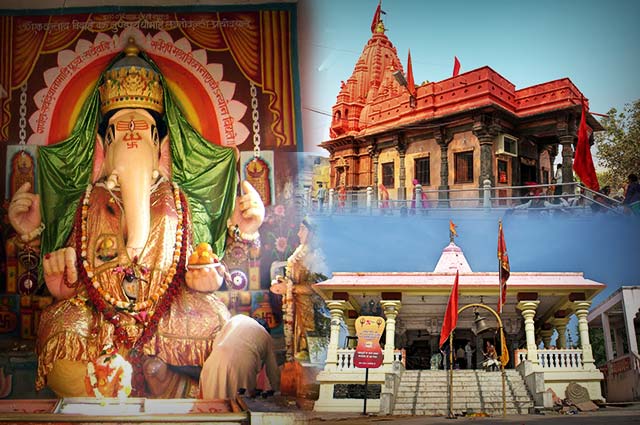
The most populated city of Madhya Pradesh, situated on the southern edge of Malwa Plateau on the embankments of the Shipra River, Ujjain is one of seven sacred cities of the Hindus. Ujjain exerts a significant cultural heritage, essentially in the form of ancient temples that stand firm dedicating the glorious events of the history.
Once the residence of Ashoka, the city dates back to 600 BC. Apart from being the capital of the ancient Avanti Kingdom, it was also the political and commercial pivot of the Central India. Still known as a central power city, Ujjain influences the media, finance, art, fashion, technology, education, entertainment, and many other industries. Thus, it has been labeled as the commercial capital of the state.
With an undeniable spiritual charm, this divine city houses a number of temples and ashrams. These temples offer glances of a splendid past. If history was your favorite subject, then you should definitely plan a visit to Ujjain, as the city will take you back to your infantile history books. Thousands of pilgrims flock every year to relish this religious heritage. Astronomers believe that the city possesses spiritual exposures, as the first meridian of the longitude passes through its quaint surface, thus making it a Greenwich of India!
If you are seeking for an eternal peace and contentment, Ujjain has something great in store to offer you. Here is a glimpse of some of the best places to visit in Ujjain:
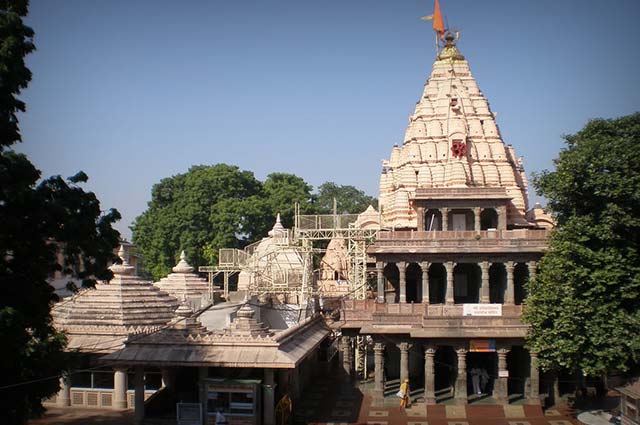
One of the most renowned Hindu temples devoted to Lord Shiva, Mahakaleshwar Jyotirlinga is one of the twelve Jyotirlingams in India. The colossus naturally occurring Linga of the Mahakala in the subterranean chamber is believed to be gaining currents of the powers from within, making it the most sacred abodes of Lord Shiva.The temple has a huge Kunda (celestial pond) named Koti Tirtha. The marble walkways of the temple are herded with thousands of pilgrims on the occasion of Mahashivratri.
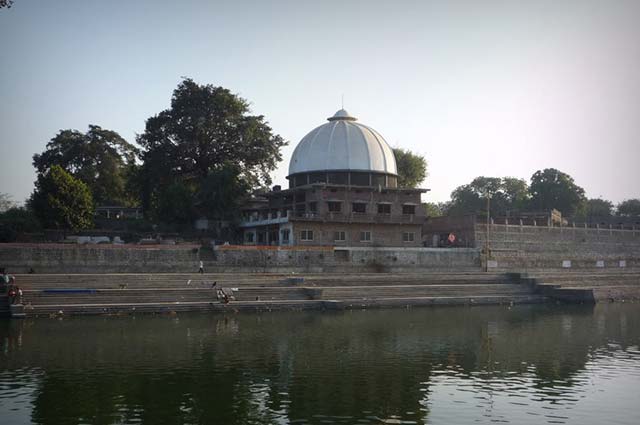
Located on the banks of the quaint Shipra River, Siddha Ashramincludes the Pardeshwar temple, an underground meditation chamber, and sprawling orchards that entice hundreds of visitors pursuing spiritual illumination each year. During the famous Kumbhmela of Ujjain, the experienced staff of the ashram serves as a host to the tourist groups, offering guided tours and encampments. They also offer a comfortable and a hygienic stay during the Kumbh Mela.
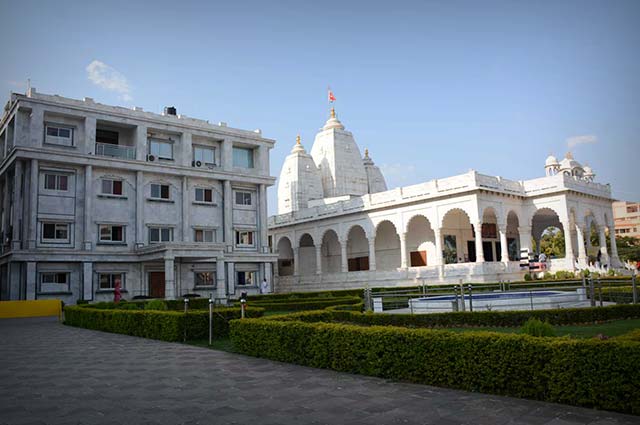
The International Society of Krishna Consciousness, ISKCON Temple is an opulent temple that has a burgeoning Tulsi garden with manyeye-catching flowers, as if it is overlapping the temple and anticipating The Divine Couple to ascend from the skies and bless the place. Createdfrom the finest marbles, the structural grandeur of the temple is simply spectacular. The temple includes a huge and clean shelter for the cows, known as Goshala and a stupendous guesthouse for the convenience of the visiting pilgrims.

Lord Kal Bhairava is the manifestation of Lord Shiva, who is believed to predict the time. Kal Bhairav is the most important of the eight Bhairavas that The Shaivaites venerated. The assumption is that the King Bhadrasen constructed this temple at the banks of Shipra River, the dazzling view of which invigorates the visitors and consecrates them of their sins. The main worship place for Kapalika and Aghora, the temple has a magnificent Malwa architecture with a few paintings speckled on all the temple's walls. Devotees offer liquor, as a part of worshipping ritual here.
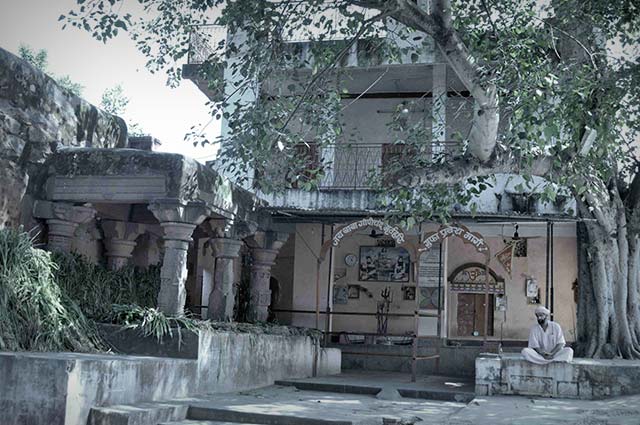
The caves are named after the famous sage, Bhartrihar, stepbrother of King Vikramaditya, who relinquished his opulent lifestyle and embraced the garb of an ascetic and meditated on the banks of the Shipra River. The caves have a small temple that is a famous holy shrine for the people belonging to the Nath community. The limpid waters of the Shipra cascade near the caves, adding beauty to the place. Thousands of devotees visit this ancient charm to pay homage to the famous sage. The primal site of Pir Matsyendranath, situated nearby, enhances the spiritual aura of the caves.
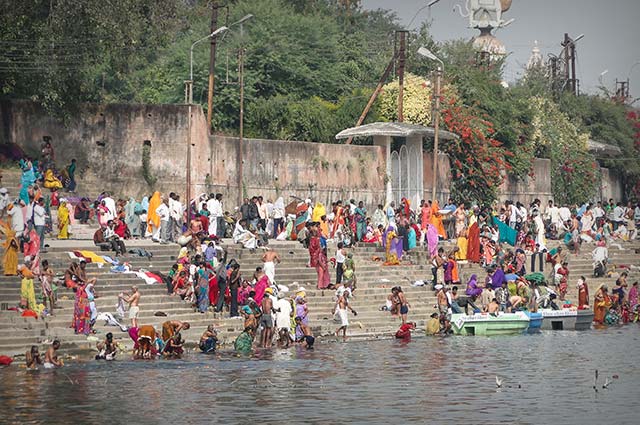
Who is not versed with the famous Kumbhmela of Ram Ghat situated near Harsiddhi Temple. This ancient bathing ghat holds a spiritual essence and thousands of merit-seekers come here, especially during the Kumbhmela that is held after every twelve years, seeking Goddess Shipra blessings. A trip to Ujjain is fragmentary if you have not included Ram Ghat in your list.

Devoted to the nine major celestial associations of the Hindu astronomy, Navagraha Mandir is located at the Triveni Ghat of the Shipra River. The temple draws a huge number of devotees of Shani Dev on the new moon days falling on Saturdays. Shani Dev is renowned as a well-wisher for the right-doers and as a curse for the evils.
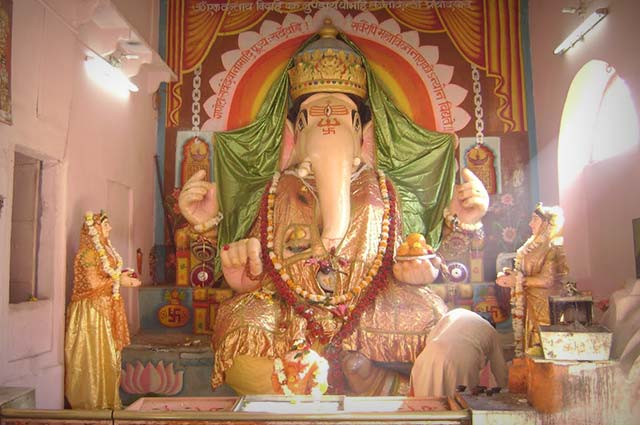
Sited near the cistern of the Mahakaleshwar temple, also one of the most distinguished ancient landmarks of Ujjain, Bade Ganeshji Ka Mandir is a popular training center for imparting education on astrology and the Sanskrit language. The temple is devoted to the Hindu deity of Prudence and Opulence, i.e. Lord Ganesha. It treasures a large baroque statue of Lord Ganesha, which is believed to be one of his prevalent sculptured metaphors.

In the primeval India, Ujjain relished eminence in the field of astronomy. Established by the Rajput King, Jai Singh II, Ved Shala is one of the renowned observatories of India. The place hosts ancient astronomical equipment that makes it one of the most famous places in Ujjain. This observatory is currently running as a prime site of numerous astronomical studies and research.
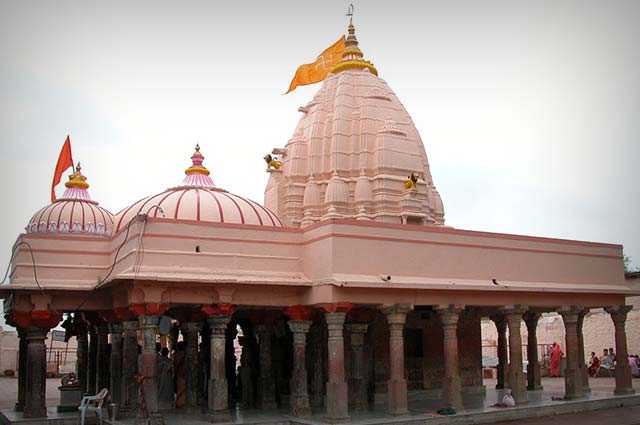
Located near the Bhartrihari Caves, Gadkalika temple is positioned about 2 miles from Ujjain. Devoted to the Hindu Goddess Kaali, it is assumed that the poet Kalidasa revered the image of Kali present in this ancient temple. The Indian emperor Harshavardhana refurbished the temple in the 7 AD, and later the farmers did some amount of refurbishing.
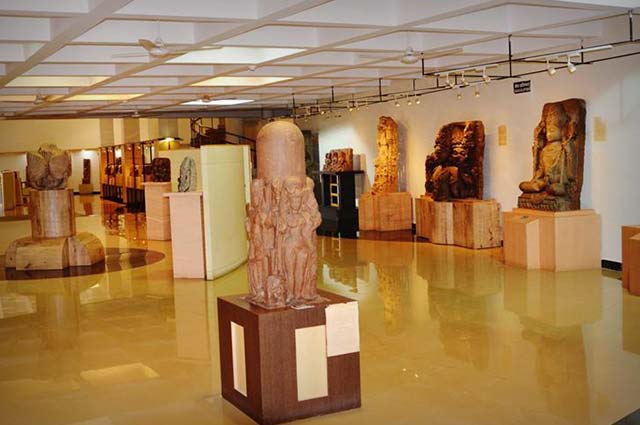
Located in the close purlieu to Rudra Sagar, the Triveni Museum is supposed to contribute volumes to the exquisite art and extraordinary statutes of the city of temples. As the name suggests, the museum is the convergence of art and epochs old statutes of Shaivayan (Shaiva gallery), Krishayan (Vaishnav gallery), and Durgayan (Shakti gallery). Centuries-old magnificently carved statues of these three cliques are exhibited on the ground floor, whereas, the imitations of the statues created out of clay; synthetic or metal material and other attractive paintings are placed on the second floor.
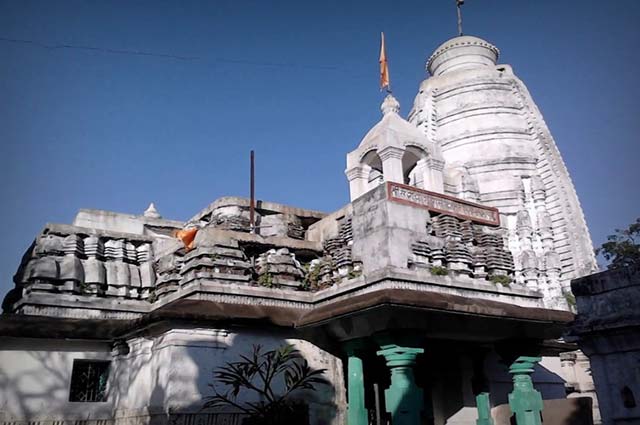
One of the 84 forms of Shiva, Khandeshwar Mahadev is situated at Khilchipur in Ujjain. It is supposed to be the 31st temple that should be visited during the parikrama of Shivalayas here. It is assumed that all desires of the people who worship Khandeshwar get fulfilled. So peeps, don't skip this one.
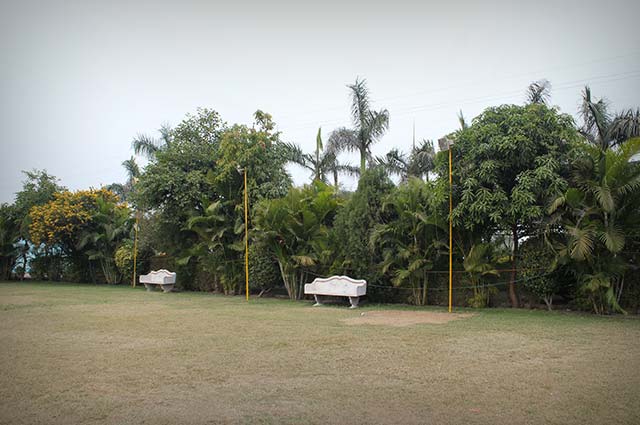
Indeed, this city of temples rejuvenates your spiritual energies, but a continuous visit to the holy places might get monotonous. Take a break at the Chandesari Adventure Park, located in one of the well-liked Hotel Resort sited on the Gram Chandesari Dewas Road. The lush green widespread lawns with different recreational activities are bound to refresh you and activate your adventure instinct!
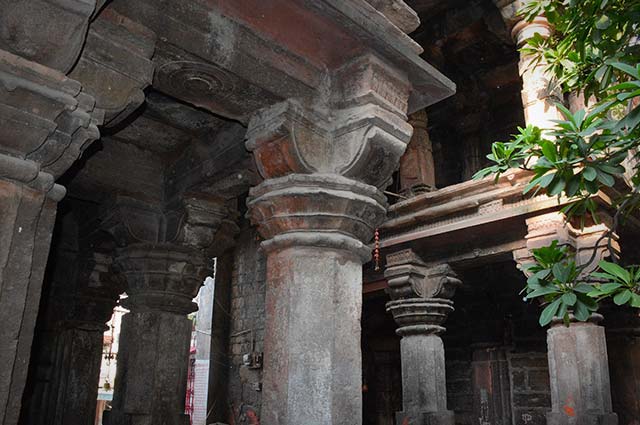
As per the traditions, the Chuabis Khamba established the grandiose entrance gate of Mahakala-Vana. Remnants of the boundary wall can still be seen near the gate. The ancient architecture includes the twenty-four opulent pillars from the 9th or 10th century AD. With the two magnificent images of goddesses mounted on each side of the gate with names carved as Mahamaya and Mahalaya on the footrests, one can have a fair idea of the gigantic dimensions of the boundary wall.

Another evidence of why Ujjain has always been an educational hub since ages, Jantar Mantar was established by Savai Raja Jay Singh between 1725-1730 AD. With different celestial equipment such as Samrat Yantra, Digansha Yantra, Shanku Yantra, and much more, Jantar Mantar still serves as an equinoctial sundial that casts a shadow, which assists in the detection of time and determining the positions of the sun and other celestial bodies.
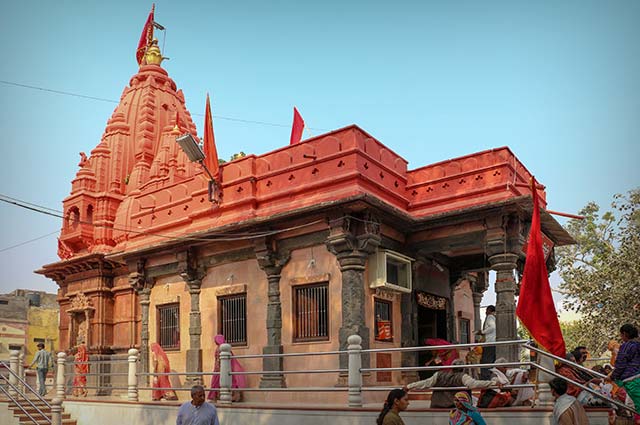
Boasting an idol of Annapurna painted in dark vermilion color between the idols of Mahasaraswati and Mahalaxmi, Harsiddhi Temple stands tall in the galaxy of ancient sacred spots of Ujjain. The temple features the special Maratha art that presents a glorious manifestation, as it was nearly in an irreparable state until the Marathas decided to reconcile it.
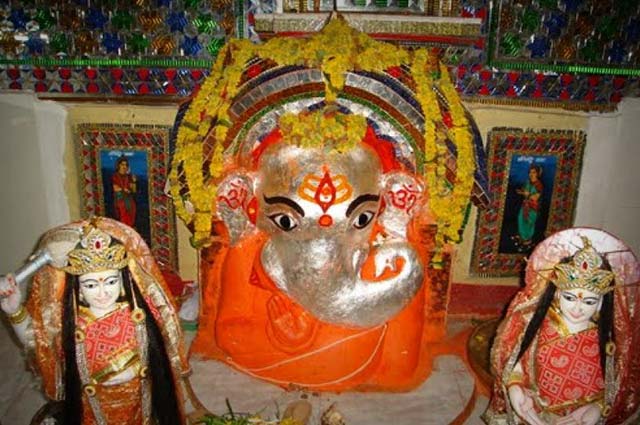
Located near the reservoir of Mahakaleshwar Temple, Chintaman Ganesh Temple is one of the most historical temples of Ujjain. 'Chintamani' is another name of Lord Vishnu. The temple possesses a colossal structure of Lord Vishnu and Lord Ganesha together. The temple is also popular by the name of the Bade Ganesh Ji ka Mandir. The old structure of the temple reveals its ancient history.
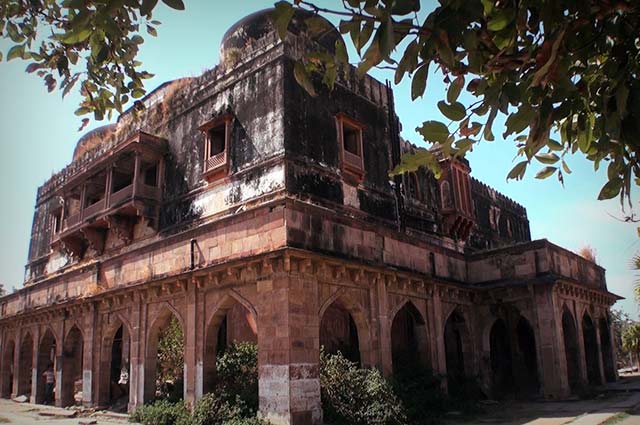
Nestled on the extravagant embankments of the Shipra River, the elegant Kaliadeh Palace stands on the aisle parted by a small stretch of a water body. The central arena inspired by the Persian architecture and the expansive passages with columns imprinted in Persian and Arabic also authenticate the visit of Emperor Akbar and Jahangir. The site evokes a splendid aquamarine expanse with the flowing river all around the palace. The structure of the palace much deteriorated under the hands of Pindar. Well, it was later restored by Madhav Rao in 1920.
Come and experience the sacrosanct aura of the 'City of Temples' and rejuvenate your soul with the splendor of 'Bhakti and Shakti'!